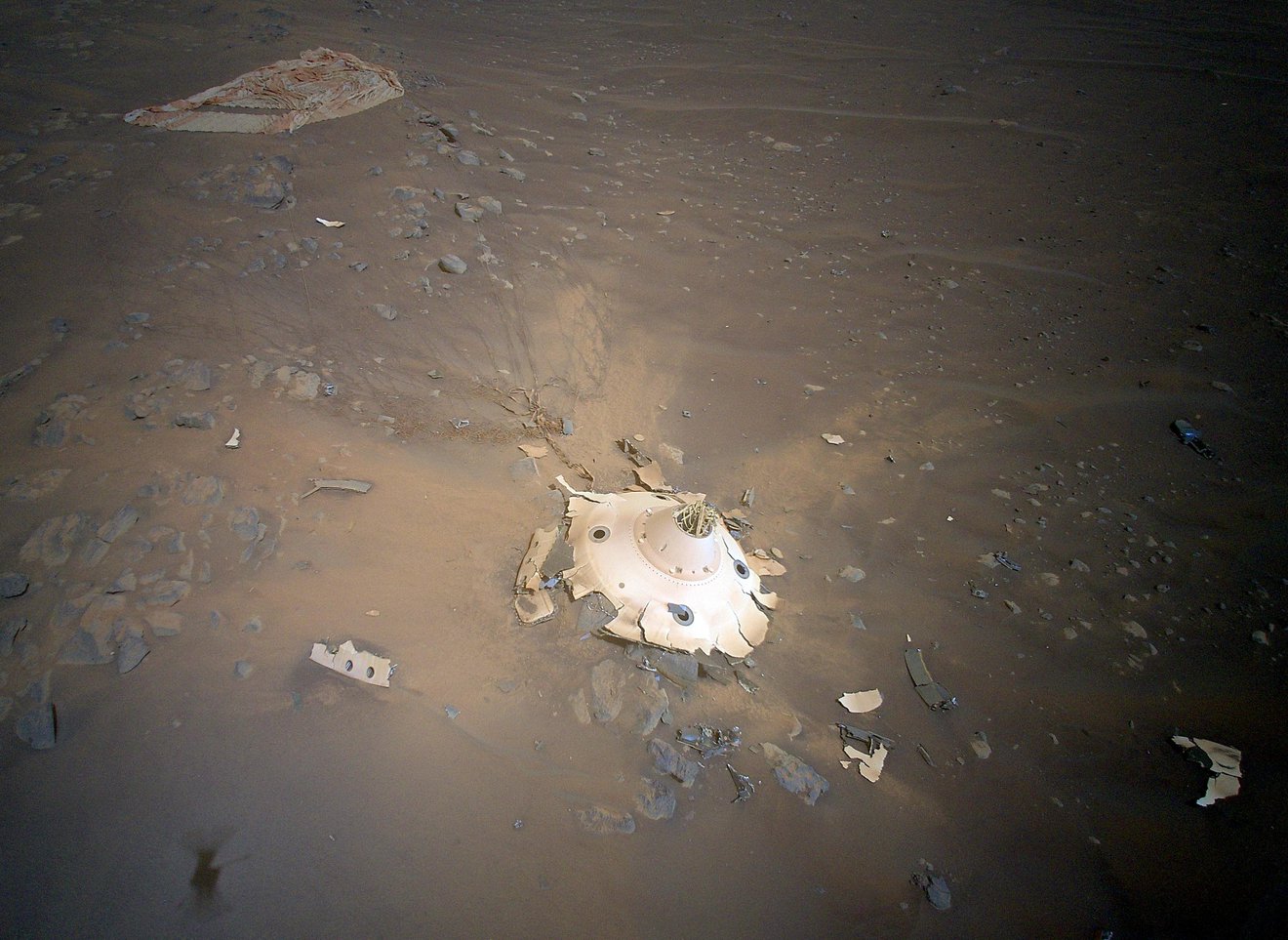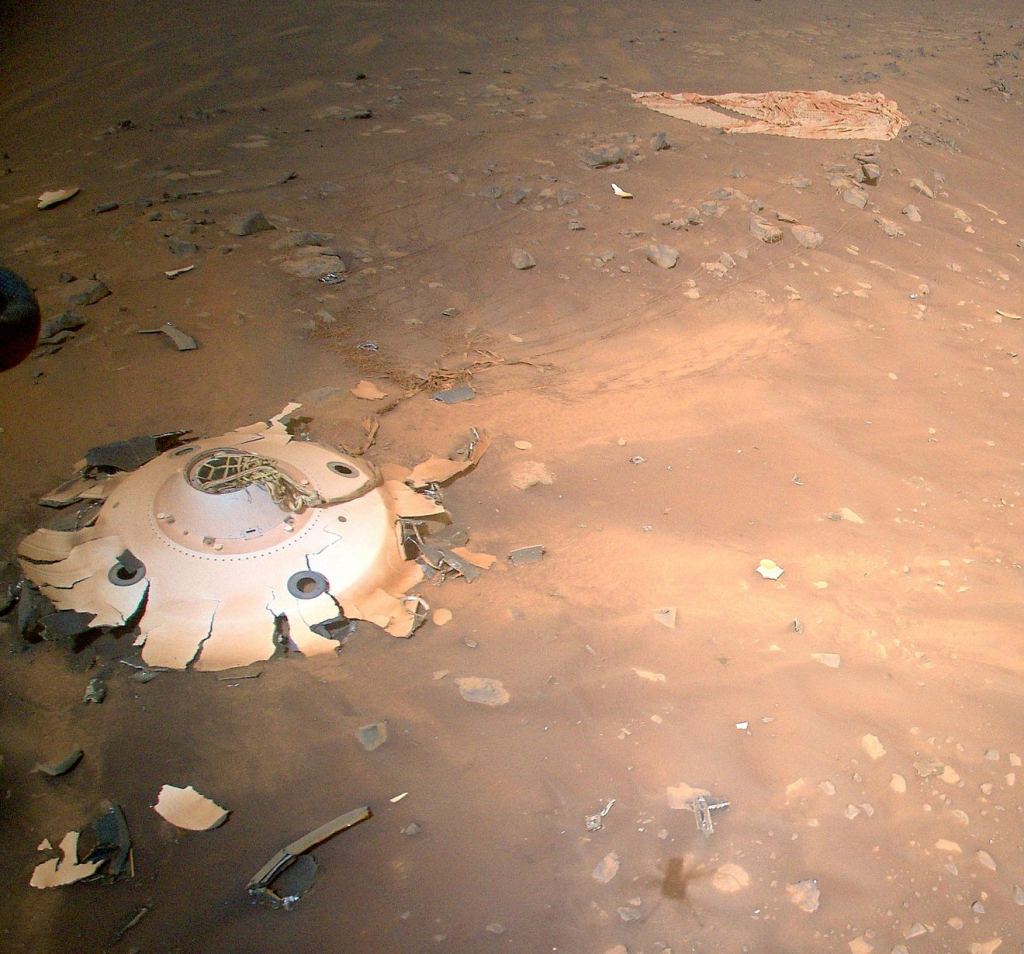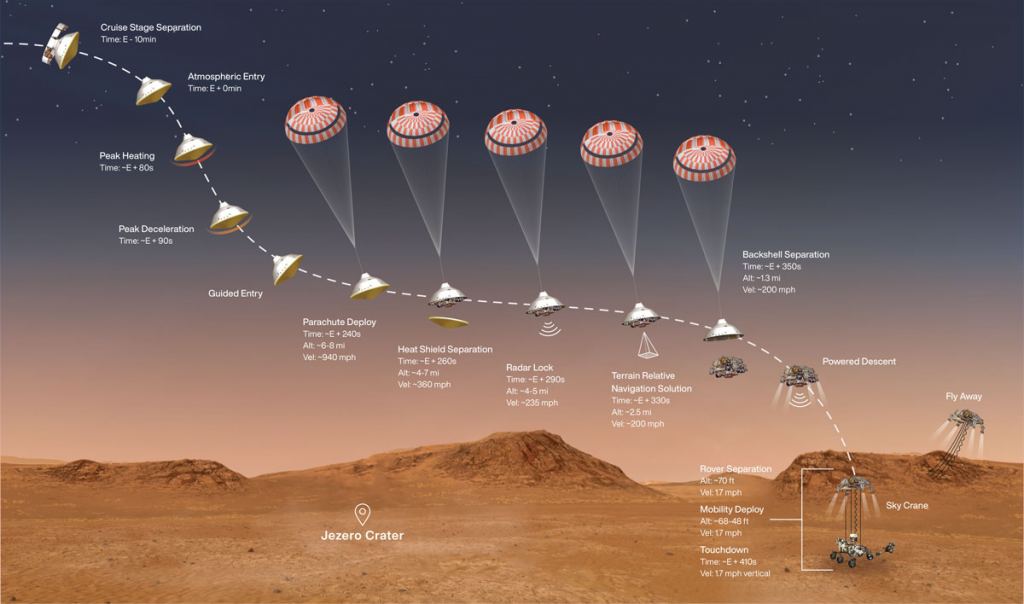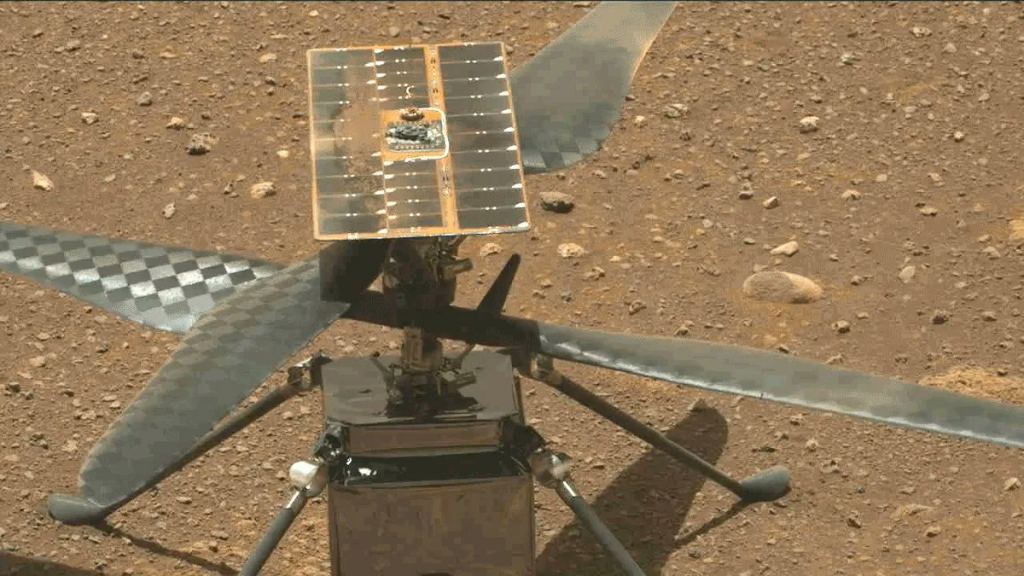You may recall we reported earlier this month that the Perseverance rover finally spotted its parachute and backshell off in the distance. This is the hardware that safely brought the rover to Mars surface on February 18, 2021.
But now, the incredible Ingenuity helicopter has snapped better images of those items, while it was hovering in the Martian air during its 26thflight.
And what a mess! The poor backshell crashed to the surface, splitting into pieces.
NASA said the backshell, the white, shattered flying-saucer looking piece of equipment, would have impacted the surface at about 126 kph/78 mph – which was the plan all along. Also visible in the photos are the parachute, along with the 80 high-strength suspension lines connecting the backshell to the parachute. This parachute was the biggest ever deployed on Mars (Perseverance is the largest rover to date). The orange-and-white parachute dimensions are 21.5 meters (70.5 feet) wide.
These items were essential to bring Perseverance safely to the surface, as part of the entry, descent, and landing (EDL) on Mars – otherwise known as the 7 Minutes of Terror. During those seven minutes, the incoming spacecraft carrying the rover comes screaming into Mars atmosphere at nearly 20,000 kph (12,500 mph) experiencing extreme gravitational forces and high temperatures. Through atmospheric resistance (and using small thrusters to keep the lander on target), the heat shield-covered backshell slows the spacecraft to under 1,600 kph (1,000 mph). At that point, it's safe to deploy the supersonic parachute. The parachute slows the lander enough to where the backshell and parachute are jettisoned, (about 2.1 km 1.3 miles in altitude), allowing a hovering rocket stage called the Sky Crane to gently lower the rover to the surface.
Those seven minutes are fast-paced and stressful, because it all has to happen automatically, with no input from engineers back on Earth.
?s=20&t=cD3I8edApih2jEFQQSIJHALoading tweet...
— View on Twitter
NASA engineers love to see these items – even in their crashed state - because it can inform them on how well these pieces of hardware worked, providing valuable insights for future missions. Ingenuity's 26thflight on April 19, 2022 provides the perspective engineers were hoping for. In total, Ingenuity took 10 aerial images of the debris field.
One of the upcoming planned missions that will benefit the most from these images is the future Mars Sample Return Lander, which is part of a multimission campaign that would bring Perseverance's samples of Martian rocks, atmosphere, and sediment back to Earth for detailed analysis. Engineers for this mission actually made a request to the Ingenuity team for these images.
"NASA extended Ingenuity flight operations to perform pioneering flights such as this," said Teddy Tzanetos, Ingenuity's team lead at NASA's Jet Propulsion Laboratory, in a press release. "Every time we're airborne, Ingenuity covers new ground and offers a perspective no previous planetary mission could achieve. Mars Sample Return's reconnaissance request is a perfect example of the utility of aerial platforms on Mars."
NASA said several weeks of analysis will be needed for a final verdict.
"Perseverance had the best-documented Mars landing in history, with cameras showing everything from parachute inflation to touchdown," said JPL's Ian Clark, former Perseverance systems engineer and now Mars Sample Return ascent phase lead. "But Ingenuity's images offer a different vantage point. If they either reinforce that our systems worked as we think they worked or provide even one dataset of engineering information we can use for Mars Sample Return planning, it will be amazing. And if not, the pictures are still phenomenal and inspiring."
 Universe Today
Universe Today



